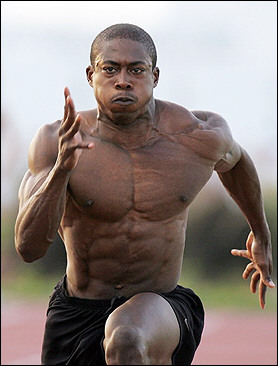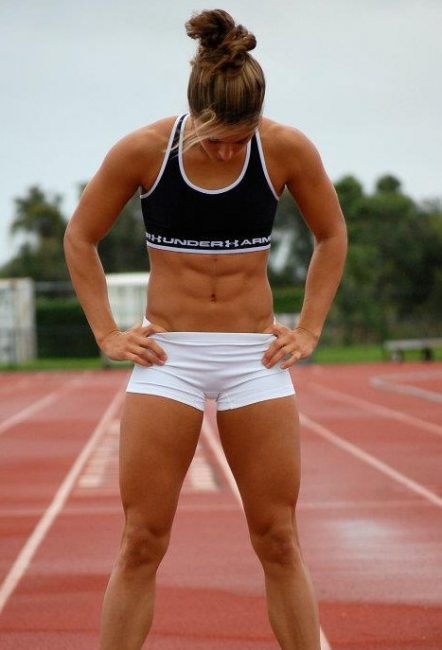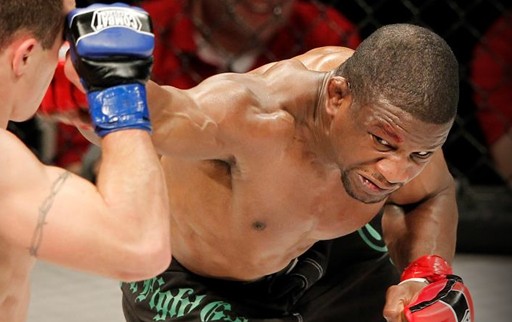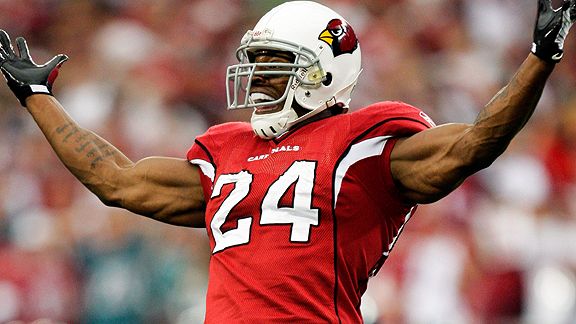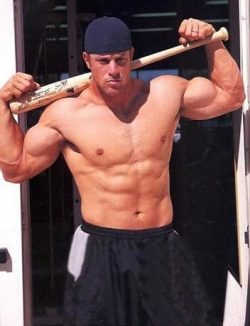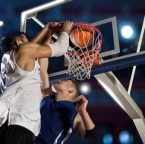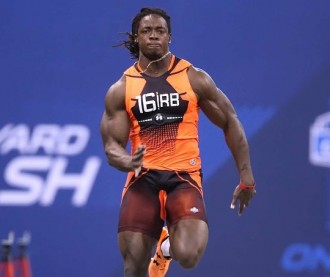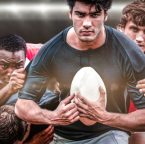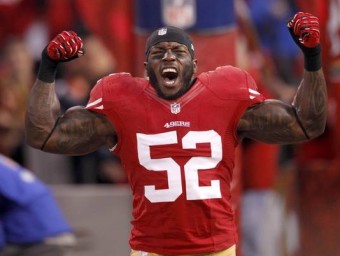When you think of a stud athlete, what comes to mind? Is it someone jumping out of the arena with a 40 inch vertical? How about someone with blazing speed running a 4.40 forty yard dash. Maybe you think of someone who can stop on a dime, change direction, and then fly past the competition.
As a strength and conditioning coach who trains athletes, it is my job to improve these qualities (speed, power, agility, etc), in order to improve my athletes performance on the field, court, mat, or wherever they compete. While many people think that you have to train these qualities separately in order to improve them, the fact is an athlete can see an improvement in all these qualities by simply getting stronger.
This may be hard to comprehend, but the fact is a weak athlete can do all the latter agility and cone drills in the world, but until that athlete improves their strength they will see NO improvement in their agility. The same can be said for the athlete trying to improve their speed. Until that athlete improves their maximal strength, they will see little improvement in their speed.
Essentially someone’s maximal strength is the limiting factor when it comes to improving other athletic qualities. What this tells us is that an athlete’s strength level will dictate how much an athlete can potentially increase other athletic qualities such as speed, agility, and power. Hence, a weak athlete will have a limited ability to improve these qualities, while the stronger athlete will have much more potential to improve them.
WHY STRENGTH?
Why is training strength so important? When you increase your maximal strength, you increase your body’s ability to apply force. Force is the name of the game when it comes to athletics. Think about it. When you increase your lower body’s ability to apply force to the ground you jump higher, you run faster (because your stride is longer), you box out better (stronger and more stable hips/legs), you kick a ball harder, etc. When you increase your upper body’s ability to apply force you throw harder, you punch harder, your stiff arm is fiercer, and you’re more dominant in the trenches. As you can see, the athlete who is stronger and can apply more force in competition is usually the superior athlete.
Let me break it down a little further using an athletic quality that is coveted by all: SPEED. Essentially the equation for speed is:
What this tells us is that in order to improve speed we must improve stride length, stride frequency, or both. While increasing your stride frequency is hard to do (this component is more genetic and less trainable), increasing your stride length is HIGHLY trainable. Again it goes back to the amount of force that your leg can apply to the ground. Increasing your strength increases the amount of force your leg applies to the ground, thus propelling your body further and increasing your stride length. So by simply getting stronger alone an athlete will become faster.
MAXIMAL RELATIVE STRENGTH
When talking about an athlete’s maximal strength I am mainly referring to their maximal relative strength (MRS). What is this? Maximal relative strength is an athlete’s maximal strength relative to their body weight. As an example (see below), if two athletes display the same strength, but weigh differently, the athlete that weighs less has greater MRS. This essentially tells us that athlete A is stronger pound for pound.
With that said, an athlete should not make it a goal to lose weight just to increase their MRS (unless they are overweight with the goal of losing body fat). Nor should they fear putting on size (especially if their goal is to increase lean body mass). The point is that no matter what the athletes goals are (increase, decrease, or maintain current body weight), they should always be striving to be as strong as possible.
USABLE STRENGTH
While training for maximal strength is extremely important for athletes, it is also important to train for usable strength. What is usable strength? Essentially it is the amount of strength an athlete can recruit during a certain timeframe. Because speed is the name of the game in most sports, very rarely will an athlete have the time to be able to recruit 100% of their maximal strength. Because of this, the athlete has to quickly recruit as much strength as possible in a short timeframe. The more fast-paced the sport, the more important usable strength becomes. Sports like football, track, and basketball rely heavily on usable strength, whereas a sport like powerlifting relies exclusively on pure maximal strength and not as much on usable strength.
For example, a running back needs to be able to cut on a dime to hit a hole or avoid a tackle. This movement happens in the blink of an eye. Thus the athlete has to be able to recruit their strength very quickly in order to apply that immense amount of force to the ground to make that cut quickly and explosively.
A powerlifter on the other hand does not need to be as concerned with recruiting his/her strength as quickly as possible. Their sport does not involve a time component and thus can develop maximal strength without any time constraints. A powerlifter doesn’t care if it takes him/her 1 second to squat 600 pounds or 5 seconds. All they care about is completing the lift.
In another example (below), let’s compare two athletes with the same maximal relative strength (MRS) who are sprinting against one another. As you can see both athletes can squat the same weight showing us that they have similar maximal strength. Athlete B though is able to recruit more strength within a short timeframe (0.2 seconds) and thus apply more force per stride. Because athlete B is applying more force per stride, he/she is able to propel themselves further and increase their stride length. When going back and looking at our speed equation, increasing our stride length will ultimately increase our speed allowing Athlete B to win the race.
Because athletes need to be able to recruit their strength as quickly as possible, it is not only important to build a good strength foundation, but it is also important to train the body to be able to quickly tap into its strength reservoir and use it very quickly and efficiently.
While the example above shows you how important it is to be able to quickly recruit as much strength as possible in a short timeframe, it should be noted that having good usable strength is useless unless an athlete has a good maximal strength foundation. As an example, let’s say that Athlete A from above races Athlete C. Athlete C is a weak athlete, but possesses high usable strength. Even though Athlete C can recruit the strength that they possess very quickly, because they lack a good maximal strength foundation they will still get beat by someone who possesses greater maximal strength (Athlete A).
 As you can see from the above examples, in order to develop a powerful and explosive athlete training should be aimed at improving maximal strength as well as improving the body’s ability to recruit that strength as quickly as possible. Athlete B in the example above displayed both good maximal and usable strength.
As you can see from the above examples, in order to develop a powerful and explosive athlete training should be aimed at improving maximal strength as well as improving the body’s ability to recruit that strength as quickly as possible. Athlete B in the example above displayed both good maximal and usable strength.
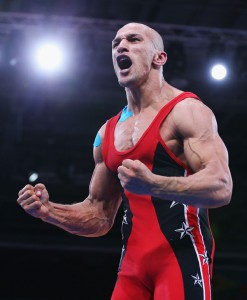
SUMMARY
- Maximal strength might be the most important quality an athlete should train for. By merely improving an athlete’s strength, they will see improvements in their power, speed, agility, etc.
- An athlete should always be striving to improve their maximal relative strength. This is their maximal strength relative to their bodyweight. If an athlete increases lean body mass, so should their strength.
- Usable strength, or the strength an athlete can recruit within the given sport’s time constraints, is also important to train. After all, an athlete’s maximal strength is useless if they cannot properly use it in their sport.
In my next article I will discuss the methods that I use with my athletes to train both maximal strength as well as usable strength. (article here)
BY BOBBY FIORITTO MS, CISSN
Works Cited
Baggett, K. (2006). The Ultimate No-Bull Speed Development Manual.

Bobby Fioritto is the founder and president of Elite Sports Performance, one of Cleveland, Ohio’s most respected athletic training facilities. He holds a Master’s degree in Exercise Physiology from Kent State University and is a Certified Sports Nutritionist (CISSN) and Youth Nutrition Specialist.
Bobby has trained athletes at every level, from youth competitors to elite professionals, delivering measurable improvements in strength, speed, and performance. His science-based approach combines strength and conditioning, nutrition, and recovery strategies to help athletes excel both on and off the field.
Learn more at www.BobbyFioritto.com.

